After months of speculation, The Co-operative Group has finally agreed to acquire Somerfield’s 880 stores for the sum of £1.565bn.
Speaking to The Grocer just hours later, The Co-op Group boss, Peter Marks, said the acquisition would “propel the Co-op back into the premier league”.
With an operation of more than 3,000 grocery stores generating net sales of £8.5bn pre disposals, he’s not wrong. The deal will make the Co-op the UK’s fifth-largest food retailer, with a market share of 7.8%, almost double its current 4.1%. “The merger is the biggest structural change in the UK for five years and is quite literally a big deal for food and grocery in the UK,” says Louise Spillard, IGD’s Director of Research. Too true.
But the last time such a transformational deal occurred in the grocery industry, with Morrisons’ takeover of Safeway, the integration was painful to say the least. So how does Marks plan to avoid the sort of mistakes Morrisons made?
The biggest challenge, however, suggests Mike Greene, CEO of data and research consultancy, him!, will be addressing the difference in culture of the two management teams. “The Somerfield team is pretty much former Asda and Tesco, from chief executive Paul Mason down,” he says. “These guys come from a fast-paced and hard-hitting retail culture and while that learning will be useful to the Co-op in years to come, they may experience some culture shock initially.”
Marks is giving nothing away about his long term plans for the Somerfield management team though it is expected to stay on in the short term at least.
“We’re not just acquiring physical assets but human assets too,” he says. “We’ll be looking at how best we can use everything that comes as part of this deal.”
He’s equally tight-lipped about the potential for job losses in the wider team and the likely fate of the current Somerfield head office in Bristol. Will the whole site be moved up to Manchester where the Co-op is based?
“We’re not definite about closing Bristol down,” Marks says. “It’s something we plan to take a long look at.” There is not just the physical and cultural aspects of integrating the two businesses to consider – the difference in customer profile may also require attention.
According to a survey of 29,000 c-store shoppers by him!, the Co-op shopper is similar to the Somerfield shopper in terms of gender (two thirds of shoppers at both groups are women), but Somerfield attracts more older shoppers – 28% are over 65 ,compared with 21% at the Co-op. Somerfield also attracts more up-market shoppers than the Co-op.
“These differences are significant enough to require some marketing tweaking,” says Greene. Another issue is the long-standing question of what the Co-op will do with the larger stores it has inherited. Frustratingly for supermarkets hoping to bid for the stores, there is still no clear steer on how many are likely to be disposed of. The Co-op’s successful trial of larger market town stores in the past year has proved there is no operational need to sell off the up to 200 larger stores to rival retailers.
“We both operate stores ranging from 2,000 sq ft to 22,000 sq ft,” says Marks. “We’re entirely comfortable with that range.”
Marks insists stores would only be sold for competition reasons and with the deal still subject to approval by the OFT, the Co-op is likely to have to get rid of a number of stores in areas where it is deemed to have too many stores.
But Marks is also likely to want shot of any stores that are underperforming or in unappealing locations, says James Flower, retail analyst at Verdict Consulting.
Despite Marks’ assurances that larger stores do fit into the mix, he may still take the view that some need to go, believes Flower. Some stores might also be sold to generate cash, he says. “Morrisons sold more Safeway stores than it planned to in order to free up much-needed cash,” he points out.
There will no doubt be teething problems. As Morrisons found out, the best laid plans can go awry. But with most in the industry agreeing that the new entity will be more than a sum of its parts, the big four already have a serious new rival to think about.
Speaking to The Grocer just hours later, The Co-op Group boss, Peter Marks, said the acquisition would “propel the Co-op back into the premier league”.
With an operation of more than 3,000 grocery stores generating net sales of £8.5bn pre disposals, he’s not wrong. The deal will make the Co-op the UK’s fifth-largest food retailer, with a market share of 7.8%, almost double its current 4.1%. “The merger is the biggest structural change in the UK for five years and is quite literally a big deal for food and grocery in the UK,” says Louise Spillard, IGD’s Director of Research. Too true.
But the last time such a transformational deal occurred in the grocery industry, with Morrisons’ takeover of Safeway, the integration was painful to say the least. So how does Marks plan to avoid the sort of mistakes Morrisons made?
The Numbers
The Co-op Group’s acquisition of Somerfield will make it a market leader in convenience food retailing, and with net sales of £8.5bn, the fifth-largest food retailer in the UK with a 7.8% share
Grocery Retail Turnover: Co-op £4.3bn
Somerfield £4.2bn
Store Numbers:
Co-op 2291
Somerfield 880 Sales
Area:
Co-op 7.8m sq.ft Somerfield 6.96m sq.ft
Market Share:
Co-op 4.1% Somerfield 3.7%
Source: IGD
One priority, says Marks, will be to ensure the pace of integration is quick. “Planning is in advanced stages and we believe the big integration projects can be completed within 12 months,” he says. “That doesn’t mean every last Somerfield store will have been rebranded by this time next year but the core tasks will be done.”The Co-op Group’s acquisition of Somerfield will make it a market leader in convenience food retailing, and with net sales of £8.5bn, the fifth-largest food retailer in the UK with a 7.8% share
Grocery Retail Turnover: Co-op £4.3bn
Somerfield £4.2bn
Store Numbers:
Co-op 2291
Somerfield 880 Sales
Area:
Co-op 7.8m sq.ft Somerfield 6.96m sq.ft
Market Share:
Co-op 4.1% Somerfield 3.7%
Source: IGD
The biggest challenge, however, suggests Mike Greene, CEO of data and research consultancy, him!, will be addressing the difference in culture of the two management teams. “The Somerfield team is pretty much former Asda and Tesco, from chief executive Paul Mason down,” he says. “These guys come from a fast-paced and hard-hitting retail culture and while that learning will be useful to the Co-op in years to come, they may experience some culture shock initially.”
Marks is giving nothing away about his long term plans for the Somerfield management team though it is expected to stay on in the short term at least.
“We’re not just acquiring physical assets but human assets too,” he says. “We’ll be looking at how best we can use everything that comes as part of this deal.”
He’s equally tight-lipped about the potential for job losses in the wider team and the likely fate of the current Somerfield head office in Bristol. Will the whole site be moved up to Manchester where the Co-op is based?
“We’re not definite about closing Bristol down,” Marks says. “It’s something we plan to take a long look at.” There is not just the physical and cultural aspects of integrating the two businesses to consider – the difference in customer profile may also require attention.
According to a survey of 29,000 c-store shoppers by him!, the Co-op shopper is similar to the Somerfield shopper in terms of gender (two thirds of shoppers at both groups are women), but Somerfield attracts more older shoppers – 28% are over 65 ,compared with 21% at the Co-op. Somerfield also attracts more up-market shoppers than the Co-op.
“These differences are significant enough to require some marketing tweaking,” says Greene. Another issue is the long-standing question of what the Co-op will do with the larger stores it has inherited. Frustratingly for supermarkets hoping to bid for the stores, there is still no clear steer on how many are likely to be disposed of. The Co-op’s successful trial of larger market town stores in the past year has proved there is no operational need to sell off the up to 200 larger stores to rival retailers.
“We both operate stores ranging from 2,000 sq ft to 22,000 sq ft,” says Marks. “We’re entirely comfortable with that range.”
Marks insists stores would only be sold for competition reasons and with the deal still subject to approval by the OFT, the Co-op is likely to have to get rid of a number of stores in areas where it is deemed to have too many stores.
But Marks is also likely to want shot of any stores that are underperforming or in unappealing locations, says James Flower, retail analyst at Verdict Consulting.
Despite Marks’ assurances that larger stores do fit into the mix, he may still take the view that some need to go, believes Flower. Some stores might also be sold to generate cash, he says. “Morrisons sold more Safeway stores than it planned to in order to free up much-needed cash,” he points out.
There will no doubt be teething problems. As Morrisons found out, the best laid plans can go awry. But with most in the industry agreeing that the new entity will be more than a sum of its parts, the big four already have a serious new rival to think about.








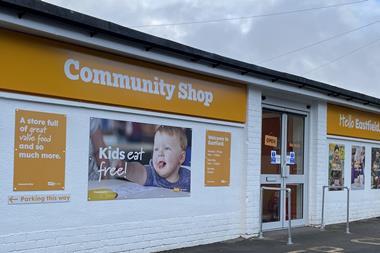

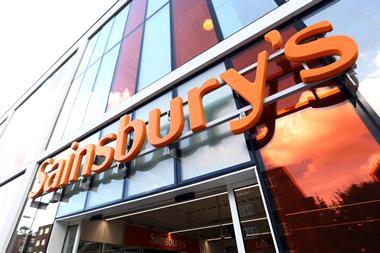
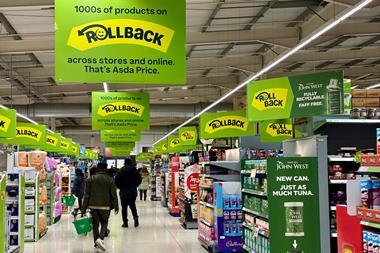
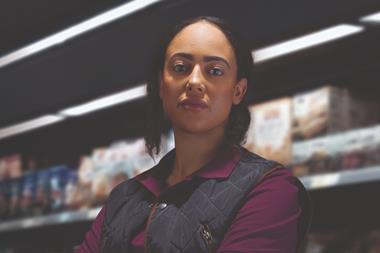

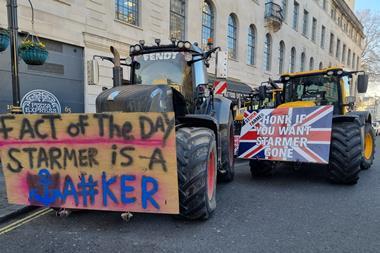
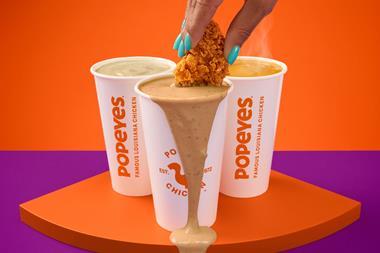

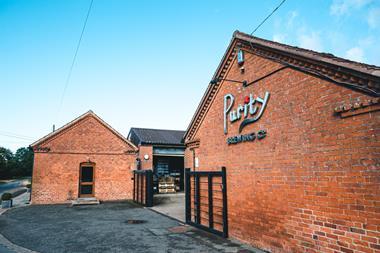
No comments yet